(Six locations in Nevada, El Dorado, Amador, and Alpine counties)
Species / Location
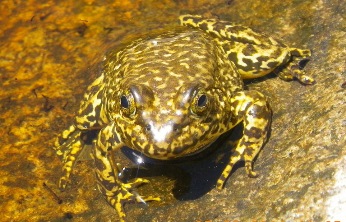 Figure 1. Adult Sierra Nevada Yellow-legged frog. Photo by Jim Erdman
Figure 1. Adult Sierra Nevada Yellow-legged frog. Photo by Jim Erdman
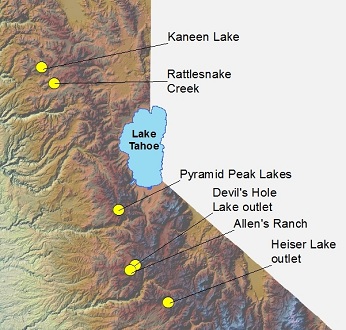 (click/tap to enlarge)
(click/tap to enlarge)
The Sierra Nevada Yellow-legged frog (Rana sierrae; SNYLF) is a federally-endangered and state-threatened species that historically inhabited lakes, ponds, marshes, meadows, and streams in the Sierra Nevada at elevations typically ranging from about 1,371 to 3,657 m but can be found as low as 1,067 m in the northern portions of its range (Figure 1). Tadpoles require multiple years to metamorphose into juveniles that are capable of surviving outside of water, so the species requires perennial water that does not completely freeze to persist.
Prior to stocking of trout as early as the 1800's, the high elevation lakes and streams of the Sierra Nevada mountains were fishless. Studies have shown that non-native trout removal in high Sierra mountain lakes has resulted in an increase in frog population densities. In addition, SNYLFs have suffered dramatic population declines and localized extirpations from chytridiomycosis, a disease caused by the amphibian specific fungal pathogen Batrachochytrium dendrobatidis (Bd), which is responsible for the decline and/or extinction of hundreds of amphibian species worldwide.
The map to the right shows survey locations. Kaneen Lake is a shallow lake in a small subalpine basin located at approximately 2275 m elevation, and the uppermost part of Rattlesnake Creek supports one of the few remaining stream-dwelling populations of SNYLF in the northern part of the range. Rattlesnake Creek is a small ephemeral stream which dries to a series of rocky pools by late summer. Both are located within the Tahoe National Forest in Nevada County. Pyramid Peak lakes, located in Desolation Wilderness on the Eldorado National Forest in El Dorado County, are two small perennial lakes southwest of Pyramid Peak. A small stream connects the lakes, which are located in an isolated granite basin at around 2,700 m. Outflow from the area drains into Lake Sylvia and Lyons Creek where brook trout are self-sustaining, creating a situation where SNYLF are isolated in fishless habitat near the top of the watershed. Devil’s Hole Lake outlet is also located within the Eldorado National Forest but in northern Amador County. Allen’s Ranch is a small meadow adjacent to privately owned land also in northern Amador County. Heiser Lake outlet, located in the Carson-Iceberg Wilderness Area on the Stanislaus National Forest in Alpine County, connects Heiser Lake with Stanislaus Meadow at around 2,400 m and supports another small stream population of SNYLF.
Need for Drought Stressor Monitoring
Due to the presence of fish and Bd, the majority of SNYLF populations in North Central Region (NCR) are small (< 20 adults) and isolated. Because the vast majority of large, perennial lakes and streams now contain non-native fish, in many areas the species persists only in small lakes, ponds or streams which are shallow and vulnerable to drying over the summer or freezing over the winter after a series of low water years.
CDFW has been consistently monitoring SNYLF populations in NCR since 2002, but funding is scarce and many populations have not been monitored since 2012. Surveying these populations after four consecutive years of drought will provide CDFW and our partners with valuable information about SNYLF population resilience that will aid in making decisions about future management of this species. Drought funding was used to target six particularly drought-vulnerable sites that would otherwise not have been surveyed this year, and additional sites will be surveyed next year.
Stressor Monitoring Efforts
A CDFW crew conducted visual encounter surveys (VES) at the six sites in August and September, recording the amount of available habitat remaining, presence of fish (if any), and counting all lifestages of SNYLFs observed. Analyses of the data and reports have been completed for three of the six sites (Pyramid Peak Lakes, Heiser Lake Outlet and Rattlesnake Creek).
Findings
Kaneen Lake: The lake habitat appeared relatively unchanged during drought conditions: however, CDFW did not observed SNYLF at Kaneen Lake in 2013 or 2015. Prior to that, low numbers of SNYLF were consistently observed at Kaneen Lake between 2001 and 2010. The cause of the lack of observations is unknown.
Rattlesnake Creek: On September 16-17, 2015, CDFW crews surveyed Rattlesnake Creek and found very dry conditions. One adult SNYLF, one juvenile, and a few dozen tadpoles were observed in various shallow pools. These numbers are dramatically lower than in previous years (Figure 2). One of the deepest pools (Figure 3) usually supports dozens or hundreds of larvae and is on the verge of going dry. The number of animals observed in 2015 is lower than previous years, but the presence of large larvae indicates that a few individuals overwintered despite shallow water.
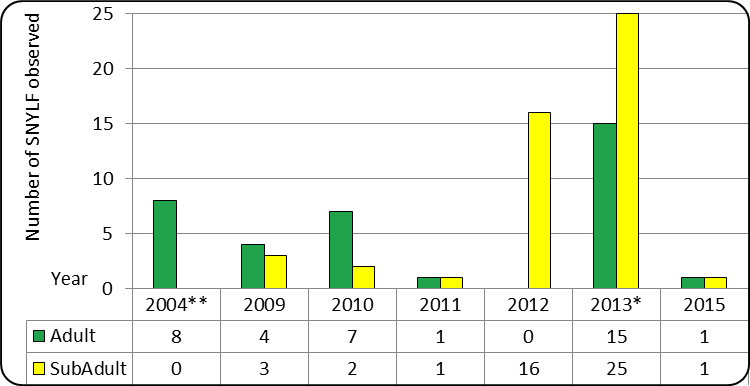
Figure 2. VES results of SNYLF adults and sub-adults at Rattlesnake Creek.
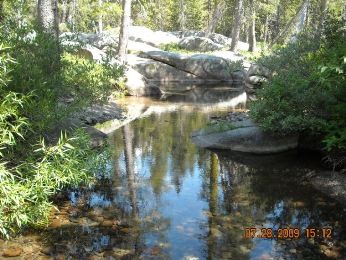 Figure 3a. Deep pool in Rattlesnake Creek, 2009. Photo by Kim Gagnon
Figure 3a. Deep pool in Rattlesnake Creek, 2009. Photo by Kim Gagnon
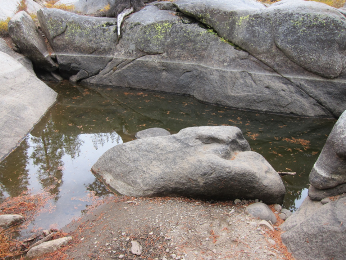 Figure 3b. Same pool in Rattlesnake Creek, 2015, showing exposed gravel that is typically underwater. Photo by Kim Gagnon
Figure 3b. Same pool in Rattlesnake Creek, 2015, showing exposed gravel that is typically underwater. Photo by Kim Gagnon
Pyramid Peak Lakes: This frog population is persisting in two small isolated ponds, neither of which was greater than 4 m deep (Figure 4). Any disturbance, natural or otherwise, that threatens overwintering habitats presents a potential extirpation risk; severe winter conditions or desiccation could eliminate the population. While Pyramid Peak lakes are fishless and fish cannot migrate into the lakes from Lyons Creek due to the presence of natural fish barriers, SNYLF are isolated in their current location and cannot expand downstream due in part to the presence of fish in Lyons Creek and Lake Sylvia. The stream connecting the two Pyramid Lakes was dry when surveys were conducted on August 18, 2015, and no SNYLF were observed there. However, a single adult SNYLF was observed at a small unnamed pond east of the Pyramid Lakes. No SNYLF have been observed at this pond during previous surveys and finding one there for the first time was a positive sign. Despite low numbers of observed tadpoles, data from 2015 suggest the population is continuing to increase slightly or remain stable (Figure 5).
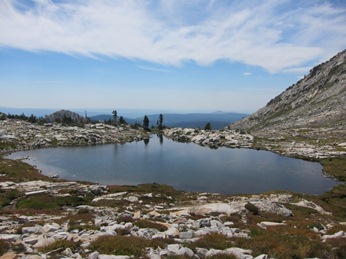 Figure 4. Largest of the two Pyramid Peak lakes, August 2015. Photo by Jamie Hinrichs
Figure 4. Largest of the two Pyramid Peak lakes, August 2015. Photo by Jamie Hinrichs
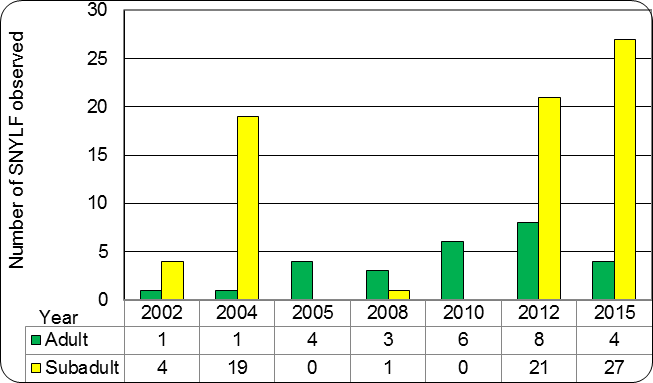 Figure 5. VES survey results for SNYLF adults and sub-adults at Pyramid Peaks lakes.
Figure 5. VES survey results for SNYLF adults and sub-adults at Pyramid Peaks lakes.
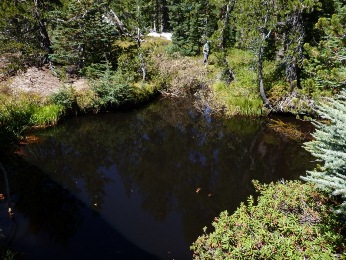 Figure 6. Black water pool in the Devil's Hole Lake outlet.
Figure 6. Black water pool in the Devil's Hole Lake outlet.
Devil's Hole Lake Outlet: All sites in the vicinity of Devil’s Hole Lake were surveyed on September 23, 2015, and a total of 3 adult SNYLF, 18 juveniles and 10 larvae were observed in one small pond and the Devil’s Hole Lake outlet stream. Despite very low water levels the population appeared to be stable. Remaining water in the outlet stream was black in color but many of the pools appeared deep enough to support overwintering SNYLF (Figure 6).
Allen’s Ranch: The site had dried to a few shallow pools when it was surveyed on September 22, 2015; however, in spite of this, surveyors observed 5 adult, 16 juvenile and 45 larval SNYLF. These numbers are the largest ever recorded by CDFW in the area.
Heiser Lake Outlet: The creek had dried to a few small pools when surveyed on September 3, 2015 (Figure 7), but despite these conditions, four SNYLFs were observed, and seven large larvae were observed in a nearby small pond, indicating that some animals successfully overwintered in the shallow site. While this population remains in danger of extirpation due to its very small size, it seems to be persisting during drought conditions (Figure 8).
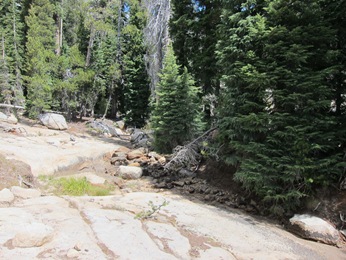 Figure 7. Mostly dry section of the Heiser lake outlet creek, Sept. 2015.
Figure 7. Mostly dry section of the Heiser lake outlet creek, Sept. 2015.
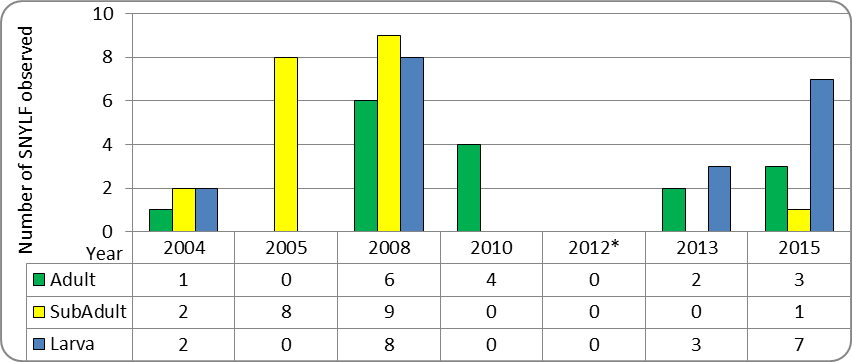 Figure 8. VES results of SNYLF adults, sub-adults, and larvae at Heiser lake outlet.
Figure 8. VES results of SNYLF adults, sub-adults, and larvae at Heiser lake outlet.
Future Efforts
Additional small SNYLF sites in the northern Sierra are vulnerable to drought and have been identified as priority sites to visit for a population status update. Weather permitting, CDFW will use drought funding to monitor some of the most imperiled sites in 2016.
CDFW